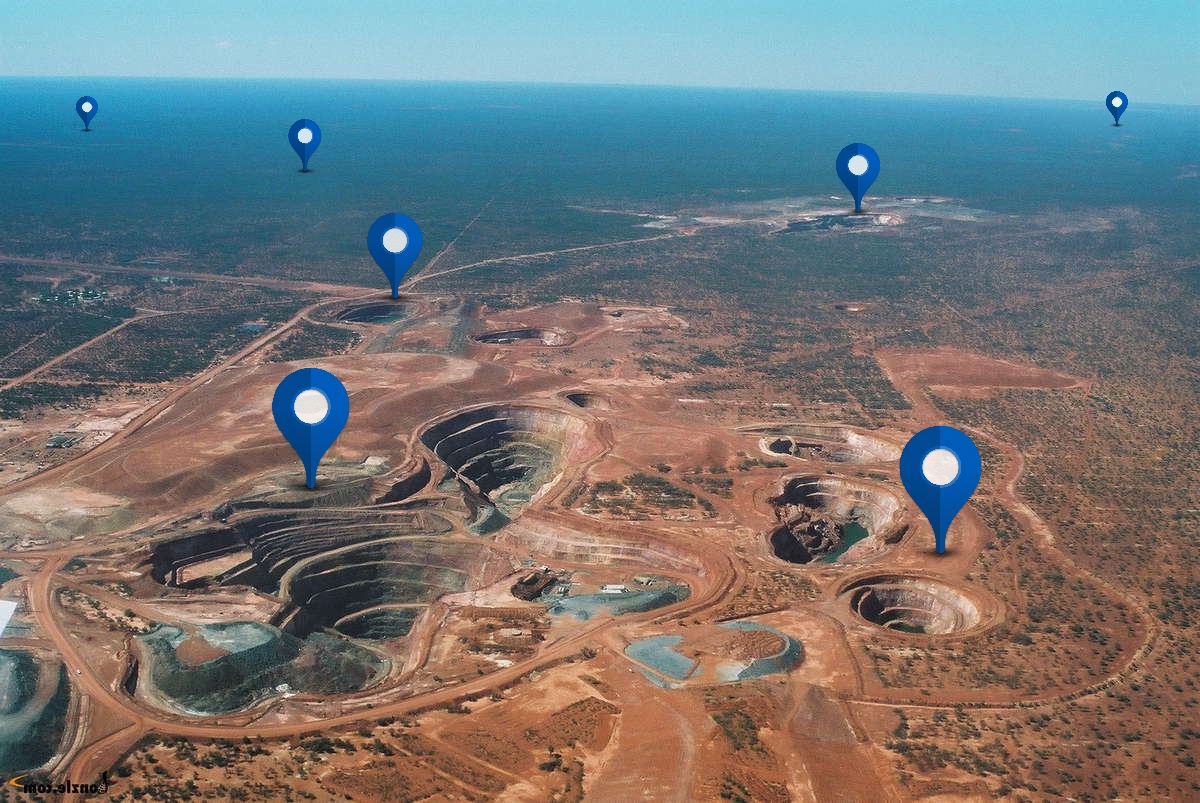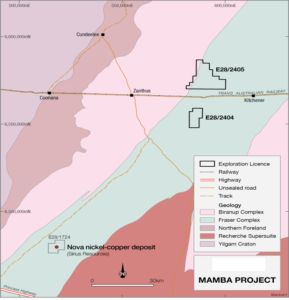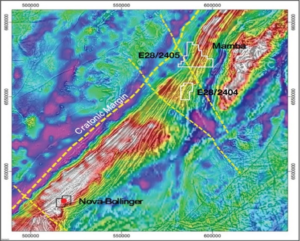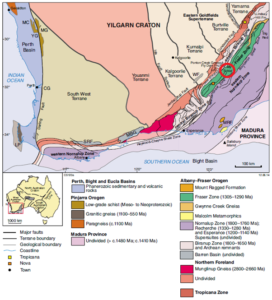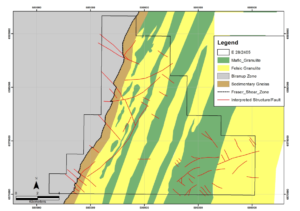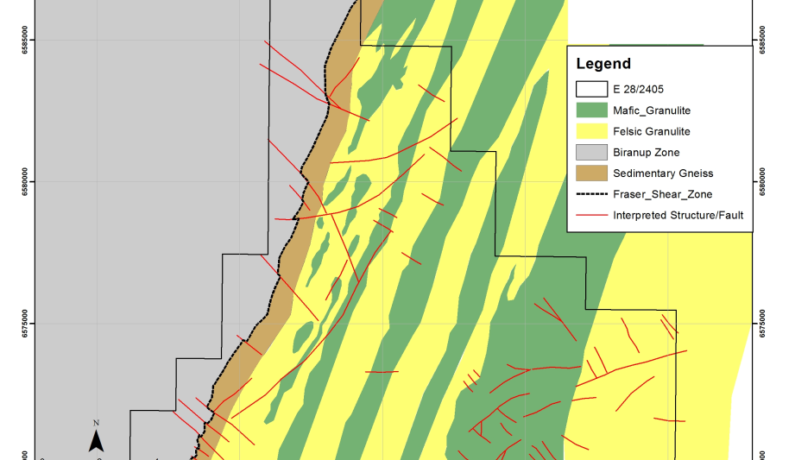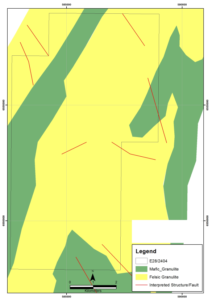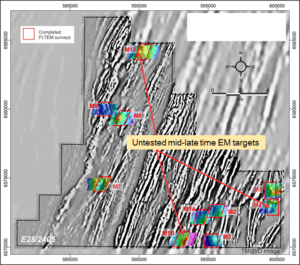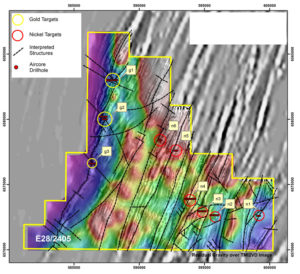Do you need a financi Read more [...]
Mamba Nickel-Copper Projec
Project Category: Exploration
-
The Vendor is seeking expressions of interest (EOI) for the potential joint venture or acquisition (in whole or in part) of its wholly owned Mamba Nickel-Copper Project (Mamba or the Project) in the Fraser Range of Western Australia.
The Project provides an opportunity to obtain access to a prospective Ni-Cu project in a favourable province and supportive jurisdiction.
Key Project Strengths:
Located only 100km along strike from the world class Nova-Bollinger Ni-Cu deposit;
Intersections of major crustal scale structures and margin of major regional gravity high;
Under-explored prospective greenfields terrain – untested basement EM targets; and
Potential to rapidly generate new targets through ground EM surveys.
Mamba covers an area of ~260km2 with 1 granted exploration licence and 1 exploration licence application.EOIs are being sought no later than 31 August 2016, with all options being considered.
The Mamba tenements cover ~239km2 in the same belt as the world class Nova-Bollinger nickel-copper sulphide discoveries of Sirius Resources NL (Now IGO) in south-eastern WA. The tenement is along strike from IGO’s Nova-Bollinger deposit and only 5km from the Trans Australian rail line (Figure 2). The Project is on the margin of a significant regional gravity high, which is interpreted to represent a large accumulation of mafic rocks prospective for massive nickel-copper sulphide mineralisation.
The Project area has had very limited previous exploration with the majority of areas having never seen any modern exploration due to shallow (5-20m) of recent Quaternary/Tertiary cover over >90% of the tenure. E28/2404 has had no effective exploration.
The Project comprises one granted exploration licence covering an area of 180km2 and one exploration licence application 59km2.
The Project tenure is in good standing, all rehabilitation completed and all commitments have been met.
Musgrave undertook a heritage survey over E28/2405. No heritage sites have been identified within the tenement and the entire tenement is clear for drilling.
No access agreement has yet been finalised with respect to E28/2404.
Mamba is located in the Fraser Range (Albany-Fraser Province) on the south-east margin of the Yilgarn Craton in Western Australia ~100km north-east of Nova-Bollinger.
The Albany-Fraser Orogen extends along the southern and southwestern margin of the Yilgarn Craton. It consists mainly of ortho-gneiss and granite, but also includes large sheets of metagabbro (including the Fraser Range Domain), remnants of mafic dykes and widespread metasedimentary rocks.
The Palaeo-Meso Proterozoic Albany-Fraser Orogen is north-easterly trending and spans a distance of 1200km along the south-eastern margin of the Archaean Yilgarn Craton (Spaggiari etal, 2014). The Albany Fraser Orogen is comprised of a north-western province dominated by reworked Yilgarn Craton (i.e. adjacent to the Craton margin) known as the Northern Foreland and a basement component in the south-east known as the Kepa Kurl Booya Province (Spaggiari etal, 2014). The basement component of the Albany-Fraser Orogen is divided into three fault bounded tectonic units; The Biranup Zone in the northwest, the Fraser Zone, which makes up the central zone and the Nornalup Zone in the southeast.
More than 60% of the Project is obscured by younger sediments of the Eucla Basin and by Tertiary channel sedimentary sequences. The cover sequences are interpreted to be 0-60m thick.
The Nova-Bollinger magmatic nickel-copper deposits are hosted within the lower granulite facies mafic rocks of the Fraser Zone. The Fraser Zone is predominantly overlain by Eucla Basin sediments, however gravity data indicates that it is approximately 450km long and has a width of up to 50km (Spaggiari etal, 2014). The Fraser Zone is dominated by metagabbroic rocks interlayered with sheets of felsic gneiss, which are collectively known as the Fraser Range Metamorphics. The Fraser Range Metamorphics are interlayered with amphibolite to granulite facies metasediments including; pelitic, semi-pelitic, and psammitic gneisses and lesser calc-silicates and iron-rich rocks (Spaggiari etal, 2014).
The host rocks of the Nova-Bollinger deposit consist of a suite of meta-gabbroic to meta-picrite cumulates which have been strongly metamorphosed.
The nickel-copper mineralisation is interpreted to have formed initially as a typical magmatic segregation Ni-Cu deposit. The sulphide assemblage of the ore mineralogy consists of pyrrhotite (~80-85%), pentlandite (~10-15%) and chalcopyrite (5-10%). This style of deposit has many features in common with various aspects of Canadian deposits such as Thompson, Raglan and Voisey’s Bay (IGO web site).
Mafic and ultramafic rocks within the Fraser Zone are host to the recently discovered Nova-Bollinger Ni-Cu deposit (2012). The host rocks of the Nova-Bollinger deposit are distinguished from the main gabbros of the Fraser Zone in that they are dominated by mafic and ultramafic cumulates and have significantly higher component of crustal contamination (Smithies etal, 2014). Regardless of the differences to the main gabbros, the emplacement of these mineralised cumulates is likely to have occurred synchronous to the main mafic magmatism within the Fraser Zone (1300Ma) (Smithies etal, 2014).
The Nova-Bollinger deposit contains a total resource of 14.3Mt @ 2.6% Ni, 0.9% Cu, 0.08% Co (see SLR ASX release dated 14 July 2014, “Definitive Feasibility Study Indicates Nova is a Goer”)
The Project is located on the southern margin of regional gravity high
Regional gravity highs interpreted to represent large mafic magma chambers at depth (source of Ni-Cu).
Intersection of regional transform faults on cratonic boundaryAircore drilling completed by Ponton (2007) and Musgrave Minerals (2015) indicates the cover sequence on E28/2405 is comprised of Eucla Basin sediments, including a relatively thin veneer of Quaternary calcareous silty sands (10m thick). Approximately 90% of the tenement is interpreted to be covered by these sediments. Tertiary lacustrine silts are commonly present beneath the aeolian sands (>5m thick). A saprolitic zone is present beneath the lacustrine sediments, which transitions into fresh basement. The average depth to fresh basement (i.e. aircore refusal) is around 45m and the thickness varies from 0m to 100m.
The underlying basement rocks are dominated by mafic (metagabbro), intermediate and felsic granulite (i.e. Fraser Range Metamorphics) with lesser occurrences of granite, pegmatite and pyroxenite. The presence of metagrabbroic rocks is evident in the strong geophysical response seen in the both the magnetic and gravity data trends (Spaggiari etal, 2014).
The tenement is located in the northwest portion of the Fraser Zone where the gabbroic sheets are relatively thin and mainly occur as layers within the metasedimentary rocks. The is also a strong north-northeast foliation in the northwest portion of the Fraser Zone, which is easy to recognise in the airborne magnetic imagery (Spaggiari etal, 2014).
Musgrave has commenced exploration on granted tenement E28/2405. E28/2404 is still in the application stage and is yet to see any effective exploration.
Musgrave has defined a number of conductive targets requiring drill testing on E28/2405.
A regional aircore drilling program over selected co-incident magnetic and gravity targets has identified potential host mafic intrusives.
Proposed Work ProgramExploration (E28/2405)
Ground EM survey to identify further drill targets
RC basement drill testing of conductors
Exploration (E28/2404)
Negotiate access agreement
Ground EM survey to identify targets
Heritage survey
RC basement drill testing of conductorsThe Project tenements are all wholly owned by Musgrave Minerals Ltd and totally unencumbered.
Musgrave undertook a heritage survey with the Central East Group Heritage Consultants in 2015. The whole of E28/2405 was surveyed and no aboriginal sites were identified.
Primary Contact Person: Rob Waugh
Company Name: Musgrave Minerals
Telephone Number: +61 8 9324 1061 -
Total Resource Estimate (M+I+I): Nickel Copper
-
